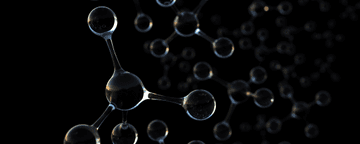High-temperature Mechanical Performance
Since Stanyl® is the only semi-crystalline aliphatic polyamide operating in the high-temperature field, the comparison with other materials is generally with other material classes, like PPS or semi-aromatic polyamides, referred to as PPA. For clarification, we displayed a PA66 based material to show the differences with other aliphatic polyamides, showing that Stanyl® is uniquely situated in this class of materials. All data shown is based on 30% glass fiber filled materials.
Dynamic Mechanical Analysis
In the graph to the left, the loss modulus of three different materials are displayed—a PA66 (blue), two different PPAs (green and purple), a PPS (red), and Stanyl® (orange) as determined in a dynamic mechanical thermal analysis in tensile mode. The DMTA can be divided into the glass plateau region, below the glass transition temperature, and in the rubber plateau region at temperatures higher than the glass transition temperature. Where in the glass plateau all polymers have a similar modulus being 1-1.5 GPa, it is clear that the real strength of Stanyl® starts at temperatures higher than the glass transition temperature. Here, irrespective of the polymer class displayed in the graph, the modulus of Stanyl® is highest of all polymers.

Short-term Mechanical Testing
A similar effect can also be seen for the short-term mechanics testing—in this case tensile performance. Where the difference at room temperature is not that big—at 120°C when comparing the data between PPS, PA66, and Stanyl®—it is already clear that Stanyl® has the highest strength and elongation at break of the different materials. The PPA2 deviates as this material is below its glass transition temperature. However, when the temperature is increased to 200°C, Stanyl® outperforms all other materials displayed in this graph, with Stanyl® having the highest strength and elongation at break of these materials.











































